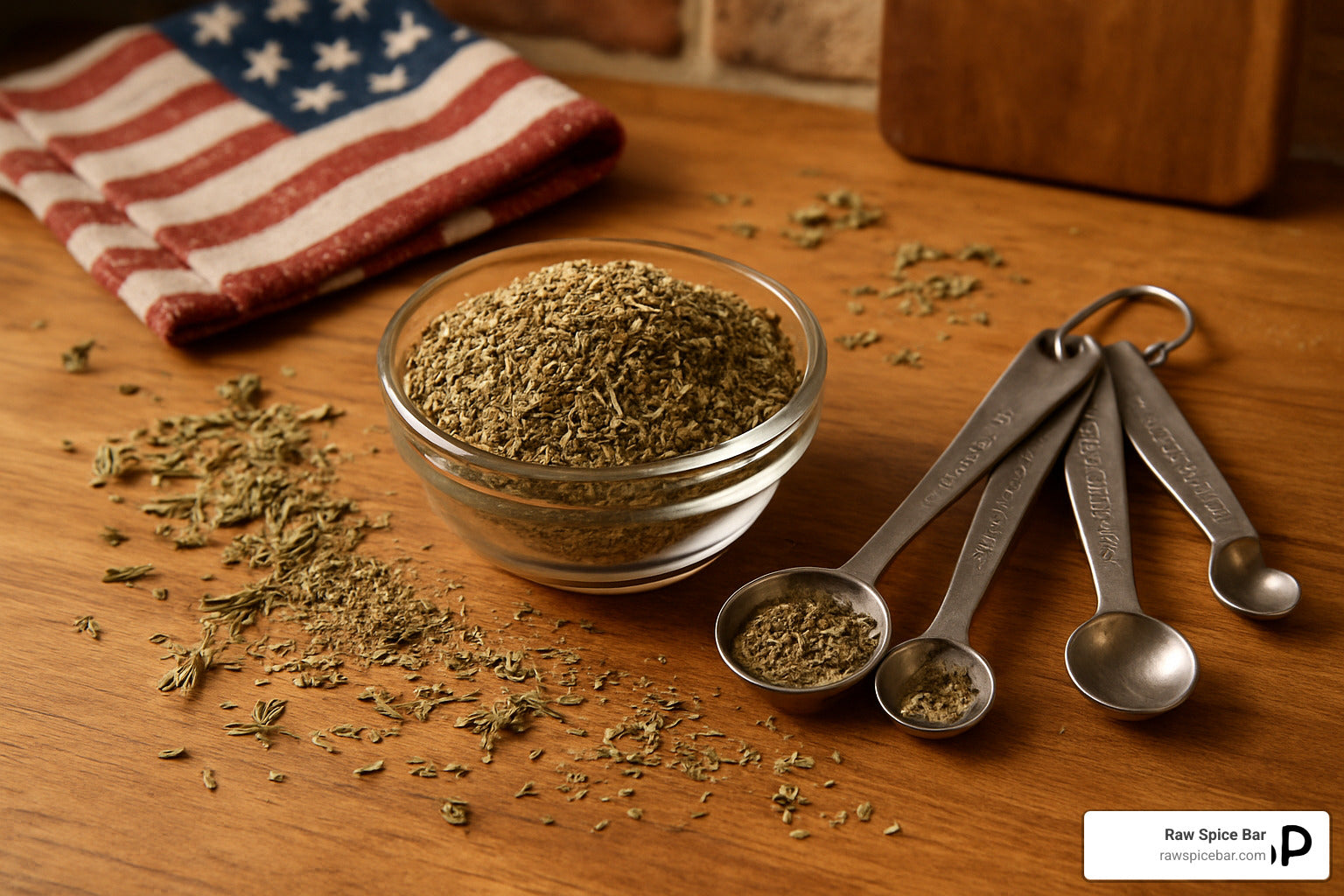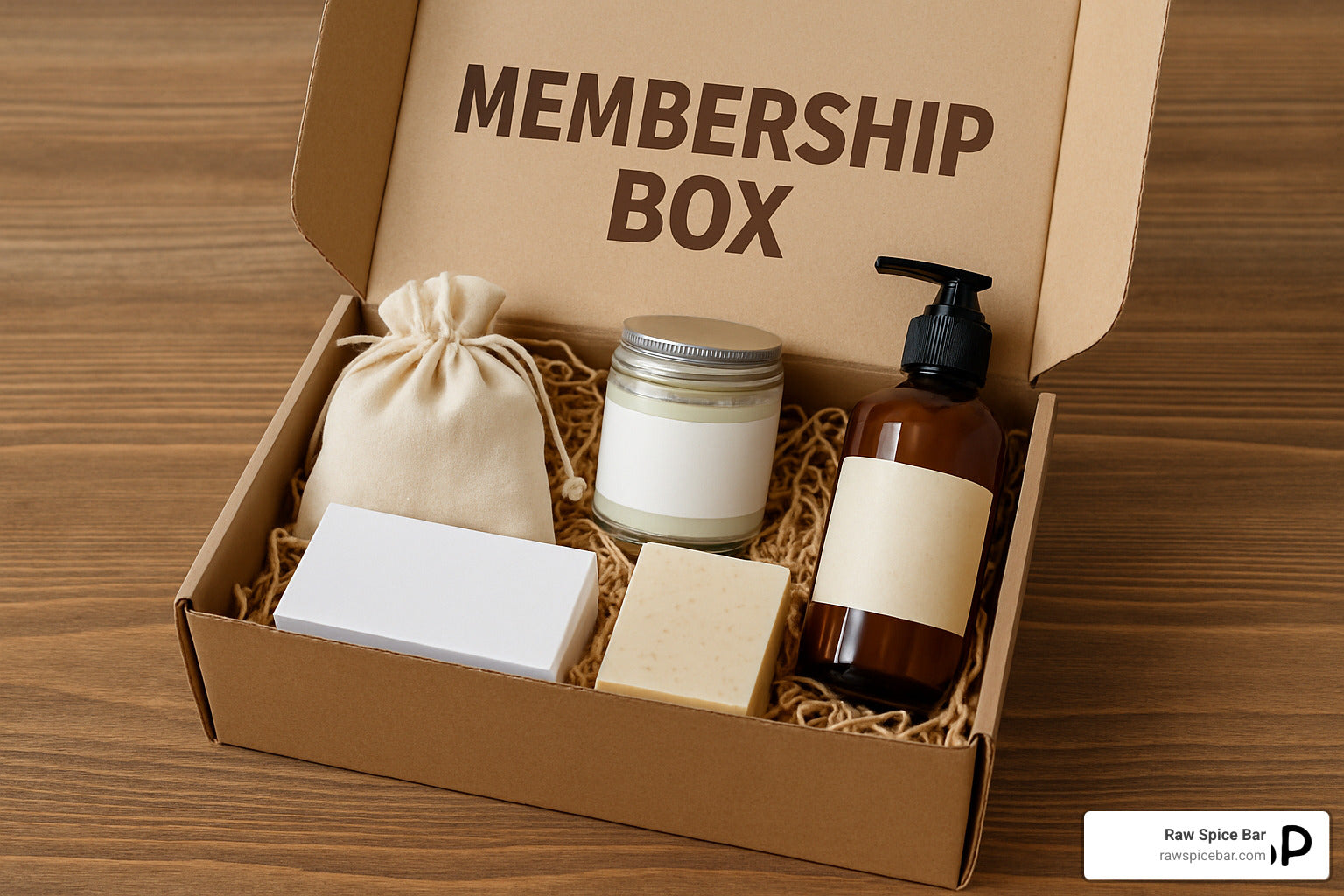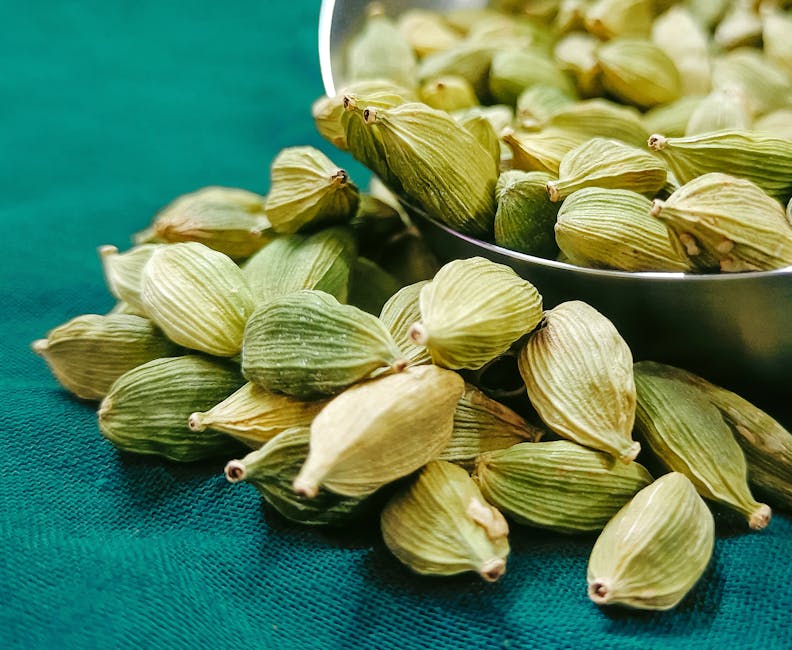Why Spices Are Your Kitchen's Secret Weapon
Learning to cook with spices transforms ordinary meals into extraordinary culinary trips. Here's what you need to know:
Essential Spice Cooking Techniques: - Toast whole spices in a dry pan for 1-2 minutes to release oils - Bloom ground spices in hot oil before adding other ingredients - Layer spices throughout cooking - whole at start, ground mid-way, blends at finish - Store in airtight containers away from heat and light - Buy whole spices when possible and grind fresh for maximum flavor
The culinary world has been shaped by spices for thousands of years. These aromatic plant parts - from bark and seeds to roots and buds - don't just add flavor. Research shows that adding herbs and spices to school vegetables increased student consumption by 18.2%. That's the power of proper seasoning.
Yet many home cooks stick to salt and pepper, missing out on a universe of flavors. Whether you're drawn to the warming comfort of cinnamon, the earthy depth of cumin, or the bright heat of cayenne, spices offer endless possibilities to lift your cooking without extra calories or sodium.
The beauty of spices lies in their versatility. They can transform the same base ingredients into completely different dishes. Rice becomes Mexican with cumin and chili powder, Indian with turmeric and garam masala, or Mediterranean with oregano and lemon zest.
I'm Joseph Rosenblatt, founder of a premium spice brand where I've spent years developing global-inspired blends and teaching customers to cook with spices confidently. Through recipe development and direct customer feedback, I've learned which techniques truly make the difference between bland and grand cooking.
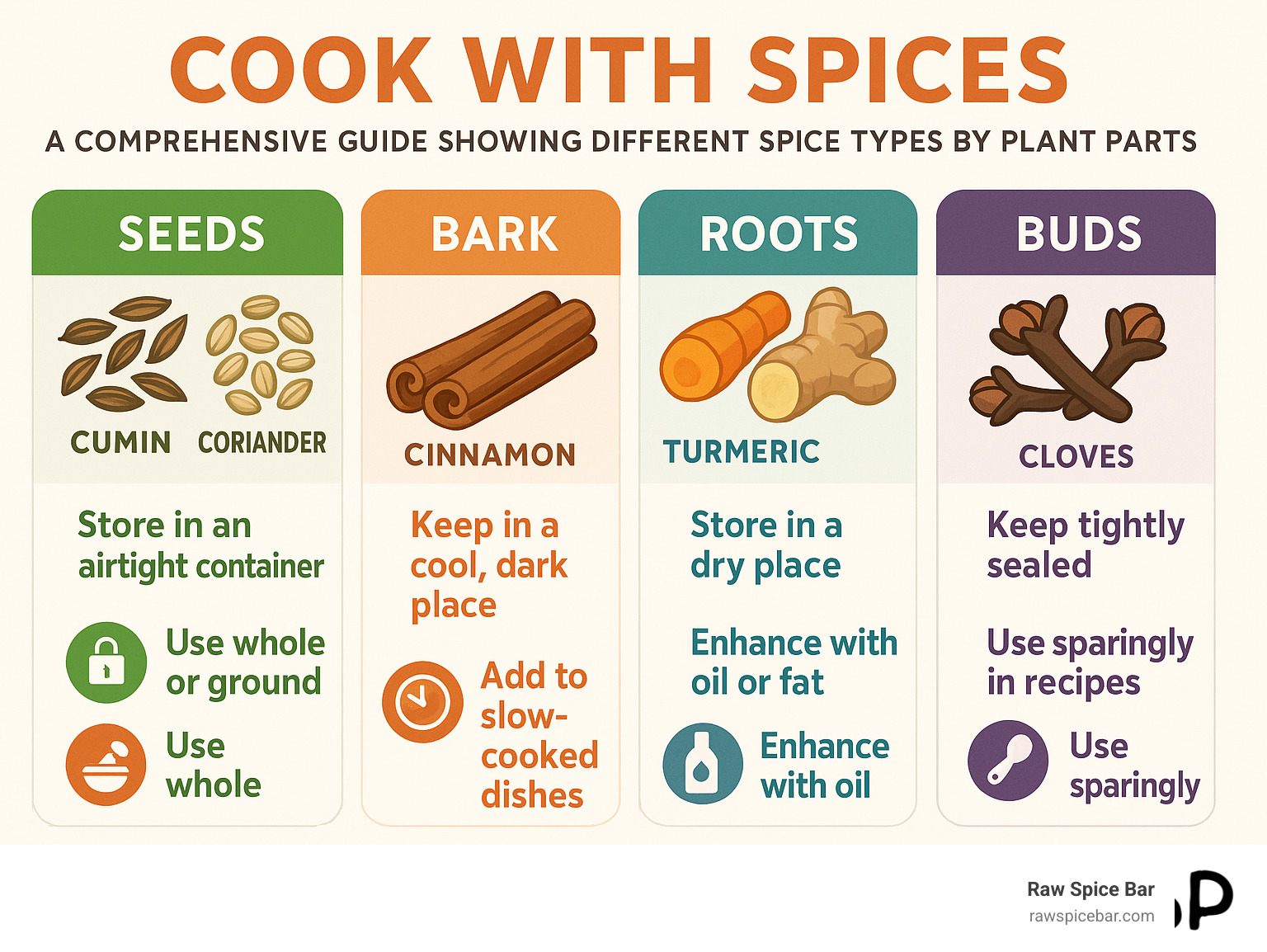
What Are Spices and How Do They Differ from Herbs?
Before you can confidently cook with spices, it helps to understand what makes them different from herbs. The distinction isn't just botanical trivia - it actually affects how you use them in your kitchen.
Spices come from the non-leafy parts of plants - think bark, seeds, roots, buds, and stems. These are the concentrated powerhouses that have been traded across continents for centuries. When you grind cinnamon bark, crack open cardamom pods, or grate fresh ginger root, you're releasing volatile oils that have been stored in these plant parts for maximum potency.
Herbs, meanwhile, are the leafy green parts without woody stems. Basil, parsley, and cilantro are classic examples. They're generally milder than spices and work beautifully both fresh and dried, though fresh herbs often give you that bright, just-picked flavor.
The key difference lies in concentration. Those volatile oils that create flavor and aroma are much more concentrated in spices. That's why a tiny pinch of ground cloves can perfume an entire apple pie, while you might use a whole handful of fresh herbs to get the flavor impact you want.
This concentration also explains why spices tend to be more heat-stable. You can add whole spices early in cooking to build deep flavor layers, while delicate herbs often go in at the end to preserve their brightness.
Spice vs Herb Quick Facts
| Spices | Herbs |
|---|---|
| From bark, seeds, roots, buds | From leaves and soft stems |
| Whole spices last 2-4 years | Dried herbs last 1-3 years |
| Intensely flavored, use sparingly | Milder, can use more generously |
| Best stored whole, ground fresh | Often better fresh when possible |
| Heat-stable, add early in cooking | Delicate, often added at end |
Understanding these differences helps you make smarter choices when you cook with spices. You'll know why toasting whole cumin seeds releases more flavor than just sprinkling ground cumin, and why your grandmother always added her dried oregano early but saved the fresh parsley for garnish.
The botanical sources matter too. Spices draw their power from the parts of plants that store energy and protect against harsh conditions - which is exactly why they're packed with the compounds that make our food so much more interesting.
Why You Should Cook with Spices (Flavor + Health)
There's something magical that happens when you cook with spices – suddenly, ordinary ingredients transform into something extraordinary. But here's the best part: you're not just making food taste better, you're actually making it healthier too.
Think about it. How many times have you tried to eat more vegetables, only to get bored with the same bland flavors? You're not alone. Researchers at the University of Maryland School of Medicine finded something fascinating when they added herbs and spices to school vegetables – student consumption jumped by 18.2%. Scientific research on veggie consumption confirms what we instinctively know: we eat more of what tastes good.
This creates a beautiful cycle. When vegetables taste amazing, we eat more of them. When we eat more of them, we get better nutrition. And when we cook with spices, we're adding concentrated doses of antioxidants and anti-inflammatory compounds that work like culinary medicine in our bodies.
Health Perks of Everyday Spices
Your spice cabinet is basically a pharmacy disguised as flavor improvers. Take turmeric, for instance. Its curcumin compounds offer a powerhouse of benefits – antioxidant, anti-inflammatory, antiviral, antibacterial, and antifungal properties all rolled into one golden spice. Scientific research on curcumin benefits shows it may help with everything from joint health to keeping your mind sharp.
Here's something that'll blow your mind: half a teaspoon of ground cinnamon contains the same antioxidant power as half a cup of blueberries. That little sprinkle on your oatmeal is working harder than you think. Similarly, half a teaspoon of dried oregano matches the antioxidants in three cups of raw spinach.
Ginger brings its own superpowers with gingerols and shogaols that act like natural anti-inflammatory medicine and settle upset stomachs. Meanwhile, capsaicin in cayenne pepper doesn't just bring the heat – it may boost your metabolism and provide natural pain relief. Even humble black pepper contains piperine, which helps fight free radicals and reduces oxidative stress.
Your everyday spices are quietly supporting your immune system while making your food taste incredible. It's like getting a health boost with every delicious bite.
Flavor Boost Without Extra Calories
One of the smartest reasons to cook with spices is how they help you cut back on salt and fat without feeling deprived. When you create complex, layered flavors with spices, your palate feels completely satisfied – often more satisfied than with heavy, salty, or fatty foods.
Instead of reaching for the salt shaker, try this salt-free seasoning idea: mix 2 tablespoons dried minced onion, 2 tablespoons garlic powder, 1 tablespoon paprika, 1½ teaspoons dried thyme, and ¼ teaspoon black pepper. This blend can replace salt in almost any dish while adding layers of flavor that salt simply can't provide.
The magic happens because spices create palate satisfaction through complexity rather than just hitting one note. When you bloom cumin seeds in oil or toast coriander before grinding, you're building flavors that make every bite interesting. This natural complexity helps you feel satisfied with smaller portions and less added fat, making healthy eating feel effortless and delicious.
Building Your Spice Pantry: How to Choose, Store, and Test Freshness
Building a well-stocked spice pantry is like assembling an artist's palette – you want quality materials that will give you the best results. The key is starting with essentials and gradually expanding based on your cooking interests.
Buy spices in small quantities and use them within their prime freshness window. Ground spices are best used within three weeks but can last up to two years, while whole spices typically last up to four years when stored properly. This is why we recommend purchasing only what you'll use in a few months.
Quality matters enormously with spices. Look for vibrant colors, strong aromas, and clear packaging dates. Avoid those decorative spice rack sets that have been sitting on store shelves for an "ungodly amount of time" – fresh, properly stored spices will transform your cooking in ways stale ones never can.
For more detailed guidance on maximizing spice flavor through proper toasting techniques, check out our guide on how to toast spices for maximum flavor.
Whole vs Ground: When to Use Each
Whole spices are your secret weapon for maximum flavor and longevity. They retain their volatile oils much longer than ground versions because they have less surface area exposed to air. When you grind whole spices yourself, you control the texture and get the freshest possible flavor.
| Whole Spices | Ground Spices |
|---|---|
| Last 2-4 years when stored properly | Best within 3 weeks, usable up to 2 years |
| Require grinding but offer superior flavor | Convenient but lose potency quickly |
| Perfect for toasting and blooming | Ready to use, good for quick cooking |
| Can be used whole in slow-cooking dishes | Blend easily into rubs and marinades |
For grinding, a dedicated coffee grinder works wonderfully – just clean it between uses by grinding plain white rice to absorb residual oils and flavors. A mortar and pestle gives you more control over texture and can create interesting combinations of fine powder and coarse pieces for varied flavor release.
Storage Best Practices
Proper storage is crucial for maintaining spice potency. Store spices in airtight glass containers in a cool, dark place around 70°F with consistent temperature. Heat, light, oxygen, and humidity are the enemies of spice freshness.
Never store spices above the stove, near windows, or in the refrigerator or freezer. The temperature fluctuations and humidity will degrade them faster. A dedicated spice cabinet or drawer away from heat sources is ideal.
Label containers with purchase dates and rotate your stock every six months. If a spice has lost its aroma or looks faded, you can sometimes revive it by dry-toasting in a pan, but severely degraded spices should be replaced.
Is It Still Good? Simple Freshness Tests
The sniff test is your best friend for evaluating spice freshness. Rub a small amount between your fingers and smell it immediately. Fresh spices should release a strong, characteristic aroma. If you smell nothing or detect musty odors, it's time to replace them.
Visual cues also help – vibrant colors indicate freshness, while faded or dull spices have likely lost potency. Ground spices that have clumped together or developed an off smell should be discarded immediately.
When in doubt, taste a tiny amount. Fresh spices should deliver immediate flavor impact. If you need to use significantly more than a recipe calls for to achieve the desired taste, your spices need refreshing.

Cook with Spices: Essential Techniques to Open up Maximum Flavor
Learning to cook with spices effectively means mastering a few key techniques that open up their full potential. These methods – toasting, blooming, layering, and finishing – transform ordinary spices into extraordinary flavor builders.
The goal is to activate and release the volatile oils that carry flavor and aroma. Raw spices often taste harsh or one-dimensional, but proper technique brings out their complexity and depth. Think of it as waking up the spices and inviting them to perform their best.
Toasting & Grinding 101 – Cook with Spices Like a Pro
Dry-roasting whole spices is perhaps the most transformative technique you can learn. Heat a heavy-bottomed pan over medium-low heat and add your whole spices. Stir constantly for 1-2 minutes until they become fragrant and start to crackle or pop slightly.
Listen for the cues – cumin seeds will release their earthy aroma, coriander will become lemony and bright, and cardamom pods will puff slightly. The spices should darken just a bit but not burn. Remove them immediately when fragrant and let them cool before grinding.
This process creates new flavor compounds through the Maillard reaction while making the spices more brittle and easier to grind. The difference in flavor between toasted and untoasted spices is dramatic – toasted cumin becomes nutty and complex rather than harsh and raw.
When grinding, pulse your spice grinder rather than running it continuously to avoid overheating the spices. Clean between different spices by grinding a slice of bread or raw rice to absorb oils and residual flavors.
Blooming in Fat – Cook with Spices for Aroma Explosion
Blooming spices in hot oil or fat is called "tadka" or tempering in Indian cooking, and it's one of the most effective ways to extract maximum flavor. Heat 2 tablespoons of oil, butter, or ghee over medium heat, then add your ground or whole spices.
For our detailed technique guide, see How to Bloom Spices in Oil. The key is timing – cook the spices just until they become fragrant and start to sizzle, usually 30 seconds to 2 minutes depending on the spice.
Be careful with delicate spices like garlic powder, paprika, or chili powder – they can turn bitter if overcooked in hot oil. Add these at lower temperatures or for shorter times. Hardy spices like cumin, coriander, and mustard seeds can handle more heat and longer cooking.
The bloomed oil becomes incredibly aromatic and can be drizzled over finished dishes, used as a cooking medium, or stirred into sauces and marinades. Scientific overview of blooming shows how this technique releases fat-soluble flavor compounds that water-based cooking methods can't access.
Layering and Finishing
Professional cooks layer spices throughout the cooking process to build complex, nuanced flavors. Start with whole spices at the beginning of cooking – bay leaves in braises, cinnamon sticks in rice, or cardamom pods in tea.
Add ground spices mid-way through cooking when you're building your flavor base. This gives them time to cook out any raw edge while developing their full character. Think of adding cumin and coriander to onions for a curry base, or paprika to a stew.
Save your most aromatic spice blends for finishing. Garam masala, chaat masala, or za'atar should be stirred in during the last few minutes of cooking or sprinkled over the finished dish. These blends contain volatile compounds that dissipate quickly with heat, so late addition preserves their bright, complex flavors.
This layering creates dishes with incredible depth – you taste different spice notes as you eat, rather than a single dominant flavor.
DIY Spice Blends & Global Flavor Pairings
Creating your own spice blends is like becoming a kitchen alchemist. When you make custom blends, you control the ratios, freshness, and flavor balance to suit your exact preferences. Plus, your house will smell absolutely gorgeous during the process.
Start by analyzing store-bought blends you enjoy to understand the ratios and combinations. Most blends follow patterns – a dominant flavor, supporting spices, and accent notes that add complexity. For comprehensive guidance, explore our guide on how to blend your own spice mixes at home.
Global cuisines offer excellent templates for spice combinations. Indian cooking pairs warm spices like cinnamon, cardamom, and cloves with earthy cumin and coriander. Mexican cuisine combines chili heat with earthy cumin and bright oregano. Mediterranean cooking emphasizes herbs like oregano and thyme with warming spices like cinnamon in unexpected savory applications.
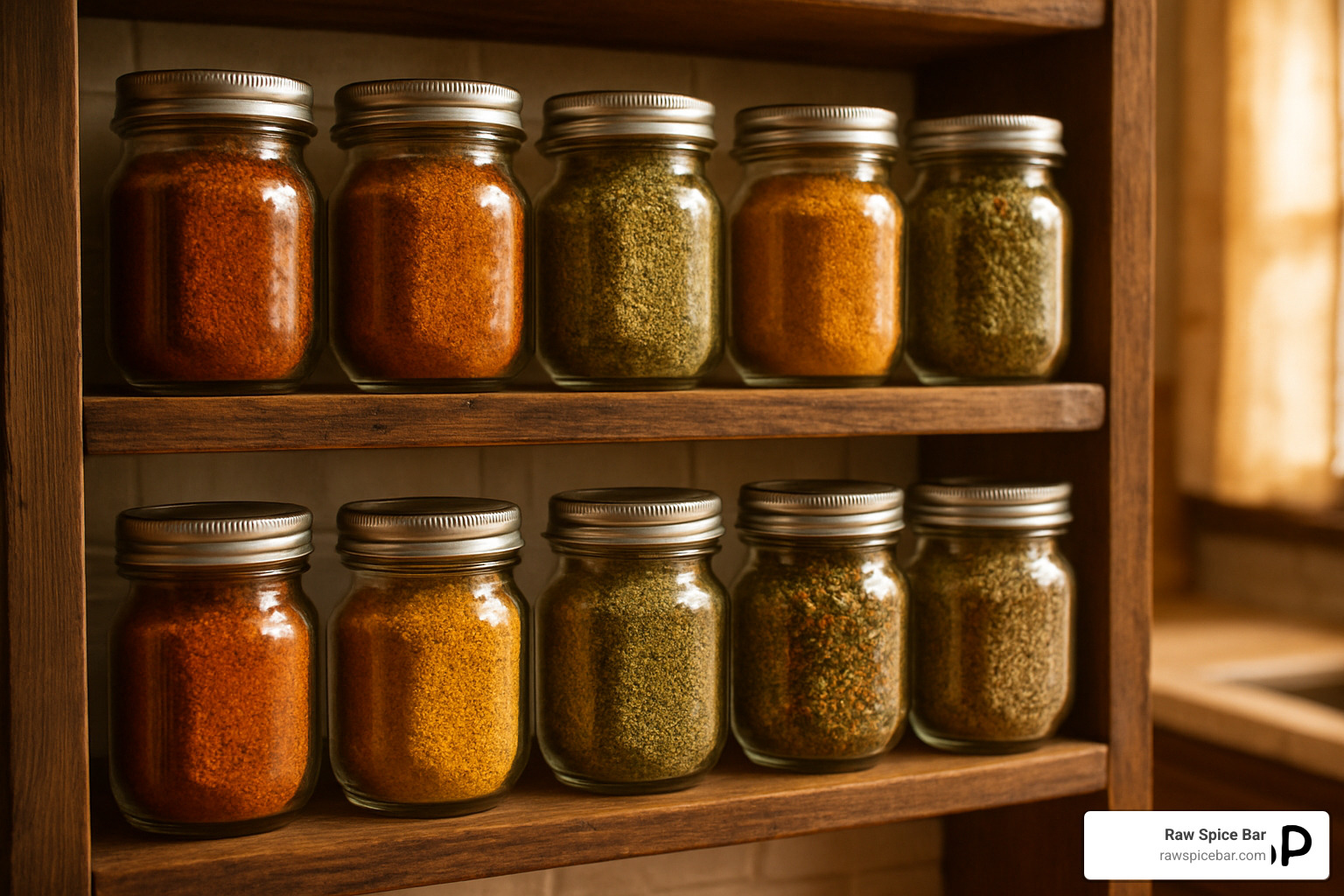
Quick Starter Blends
Garam Masala (Indian warming spice): 2 tbsp coriander seeds, 1 tbsp cumin seeds, 1 tbsp cardamom pods, 1 cinnamon stick, 1 tsp whole cloves, 1 tsp black peppercorns, 1 whole nutmeg. Toast whole spices, cool, then grind fine.
Taco Spice: 2 tbsp chili powder, 1 tbsp cumin, 1 tsp paprika, 1 tsp oregano, ½ tsp garlic powder, ½ tsp onion powder, ¼ tsp cayenne. Mix and store in airtight container.
Za'atar (Middle Eastern): 3 tbsp dried thyme, 2 tbsp toasted sesame seeds, 2 tbsp sumac, 1 tsp salt. Combine and use on bread, vegetables, or yogurt.
Ras el Hanout (Moroccan): 1 tbsp each coriander, cumin, sweet paprika; 1 tsp each cinnamon, turmeric, ginger; ½ tsp each cardamom, cloves, cayenne.
Berbere (Ethiopian): 2 tbsp paprika, 1 tsp each cayenne, fenugreek, coriander, cardamom; ½ tsp each cinnamon, cloves, allspice.
Experimenting Safely
Start with small batches when experimenting – make just enough for one or two dishes until you perfect the blend. Taste as you go, adding spices gradually. You can always add more, but you can't take it back.
Keep notes on successful combinations and ratios. What worked? What would you adjust next time? Building your spice knowledge takes time, but each experiment teaches you something new about flavor balance.
Be mindful of dietary restrictions and sensitivities. Up to 20% of Americans live with GERD, and spicy foods can exacerbate symptoms. When cooking for others, start mild and let people add heat to taste. Always check for allergies, especially with spice blends containing nuts, seeds, or less common ingredients.
When scaling recipes up, increase spice quantities gradually rather than proportionally. Spices don't always scale linearly – doubling a recipe doesn't necessarily mean doubling every spice. Taste and adjust as you go.
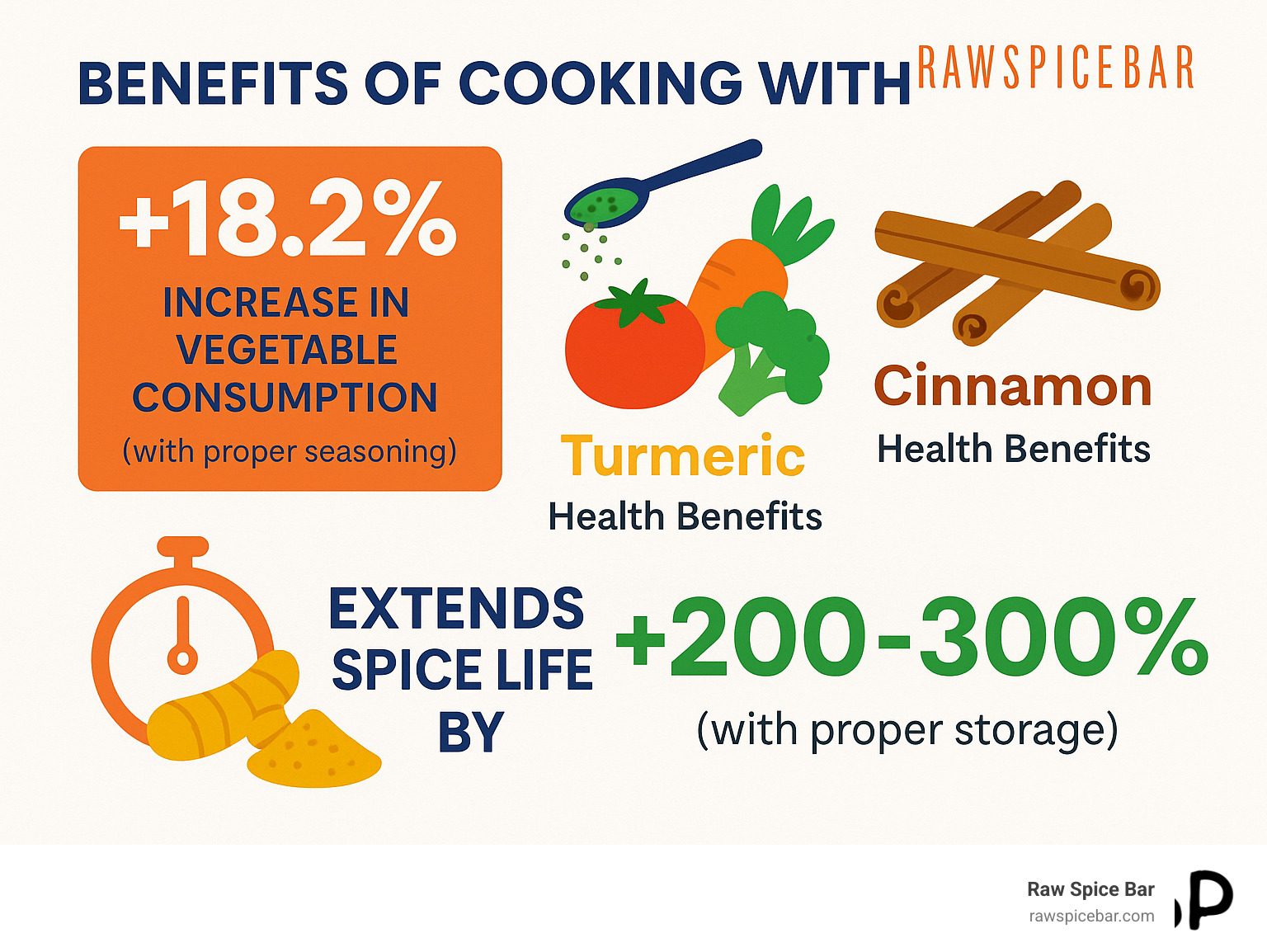
Frequently Asked Questions about Cooking with Spices
How can beginners confidently cook with spices?
The secret to gaining confidence is starting small and building on familiar territory. If you already love cinnamon in your morning oatmeal, try adding just a pinch to your next beef stew or roasted carrots. This bridges the gap between what you know and what feels scary.
Begin with single spices rather than complex blends. Understanding how individual spices taste and behave gives you the foundation to create your own combinations later. Try tasting small amounts of different spices mixed into plain yogurt or a neutral base - this teaches you their individual personalities without other flavors getting in the way.
Follow trusted recipes at first, but don't be afraid to make small adjustments. If a recipe calls for one teaspoon of cumin and you're nervous about the flavor, start with three-quarters teaspoon. You can always add more next time, and this approach helps you learn your personal preferences.
Keep a simple notebook of what works and what doesn't. When you cook with spices successfully, jot down what you used and how much. These notes become your personal flavor map and build confidence over time.
How do spices let me cut back on salt and fat?
Spices create the kind of complex, layered flavors that make you completely forget about missing salt or butter. When you bloom cumin and coriander in just a tablespoon of oil, those aromatic compounds spread throughout your entire dish, making every bite satisfying and interesting.
The magic happens through layering different types of sensations - the warmth of cinnamon, the earthiness of cumin, the brightness of coriander, and the gentle heat of paprika all work together to create a full flavor experience. Your brain registers this complexity as more satisfying than simple salt or fat.
Think about it this way: that 18.2% increase in vegetable consumption we mentioned earlier happened because proper spicing made healthy foods actually crave-worthy. When you learn to cook with spices effectively, you naturally want to eat more of the good stuff because it tastes fantastic.
Techniques like toasting and blooming maximize the impact of small amounts. A single teaspoon of properly prepared spices can transform an entire pot of food more effectively than heavy-handed salting or extra butter ever could.
Which spices should people with GERD use cautiously?
People dealing with GERD need to be thoughtful about spicy, acidic, or mint-based seasonings that can trigger uncomfortable reflux symptoms. This means going easy on cayenne, chili powder, large amounts of black pepper, and anything with peppermint.
The good news? Many wonderful warming spices like cinnamon, cardamom, turmeric, and ginger are generally gentle on sensitive digestive systems. These spices often actually support digestion rather than irritating it. Ginger, in particular, has a long history of soothing upset stomachs and reducing nausea.
Start your spice journey with mild, warming options like coriander, cumin, and fennel. These tend to be easier on sensitive systems while still delivering excellent flavor. You can build beautiful, satisfying dishes using these gentler spices as your foundation.
Everyone's triggers are different. Keep a simple food diary to track which spices work well for you personally - what bothers your neighbor might be perfectly fine for your system. When you're unsure about a particular spice, start with tiny amounts and see how your body responds. And always check with your healthcare provider if you have specific concerns about which seasonings are right for your situation.
Conclusion
Learning to cook with spices transforms your kitchen into a global culinary playground. From the warming accept of cinnamon to the bright heat of cayenne, spices offer endless possibilities to lift every meal without extra calories or sodium.
The techniques we've covered – toasting, blooming, layering, and finishing – are your foundation for flavor mastery. Start with quality spices, store them properly, and don't be afraid to experiment. Even professional chefs started with simple combinations before developing their signature styles. Every expert was once a beginner who decided to take that first brave step into the aromatic world of spices.
Your spice journey is deeply personal. Maybe you'll fall in love with the complex warmth of Indian garam masala, or perhaps the bright herbaceousness of Mediterranean za'atar will become your go-to flavor booster. The smoky heat of Mexican chili blends might speak to your soul, or you could find that Ethiopian berbere transforms your weeknight dinners into something extraordinary.
At Raw Spice Bar, we're passionate about making global flavors accessible to home cooks everywhere. Our monthly spice blend subscriptions deliver freshly packed, globally inspired combinations with seasonal recipes and educational content to guide your spice journey. Each blend comes with detailed instructions and recipe ideas, taking the guesswork out of creating restaurant-quality flavors at home.
We believe that cooking should be an trip, not a chore. That's why we pair each spice blend with easy-to-follow recipes and educational content that builds your confidence in the kitchen. Whether you're a complete beginner or an experienced cook looking to expand your flavor horizons, our blends help you explore new cuisines without the intimidation factor.
For more inspiration and techniques, visit our cooking made flavorful with fresh spice blends guide and browse our recipe collection for creative ways to use your new spice knowledge.
Your journey from bland to grand starts with a single pinch of perfectly chosen spice. Trust your palate, accept the trip, and let the aromatic world of spices transform your cooking forever. The dinner table is waiting for your newfound spice confidence to shine.


